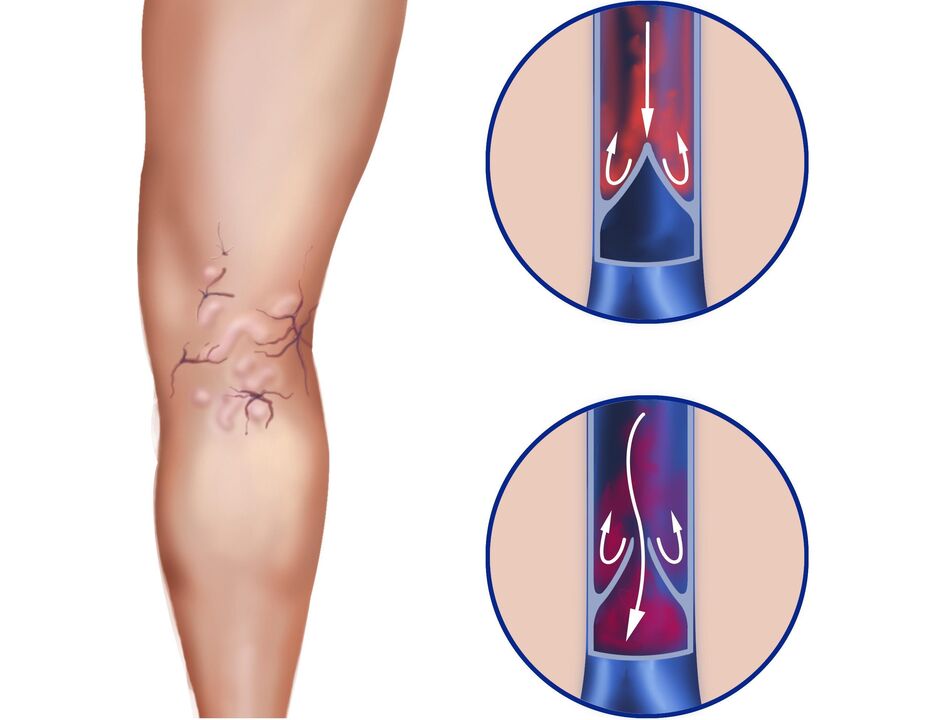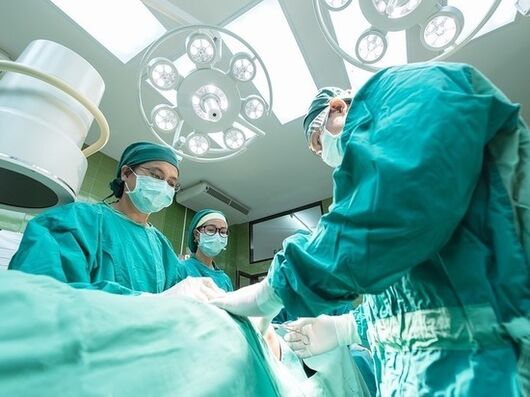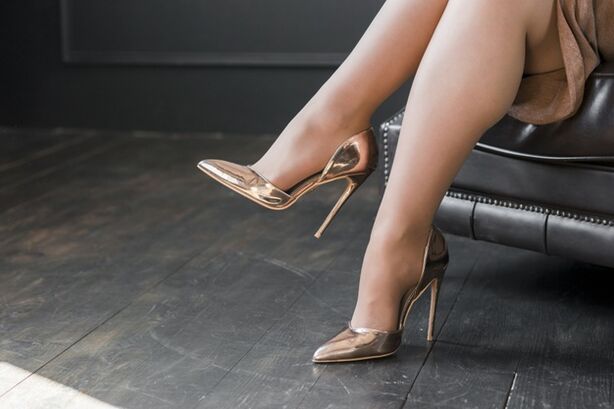Different veins of the lower limbs or varicose veins of the lower limbs - the enlargement of the superficial veins, accompanied by valve insufficiency and impaired blood flow.
This is the most common disease of the peripheral vessels.According to epidemiological data, various forms of this disease have been detected in 26-28% of women and 10-20% of men of working age.
Risk factors for the development of varicose veins
Heredity and its role in the development of varicose veins have not been found unequivocally confirmation.One of the main counterarguments of the presence of a genetic predisposition is the different incidence of varicose disease in ethnic Africans and their colleagues who emigrate to the United States and Western European countries.In addition, compared to sedentary tribes, the incidence of varicose veins, which does not exceed 0.5%, emigrants have a reliable increase in frequency of 10-20%.In this regard, the conclusion is obviously about varicose diseases of environmental factors, lifestyle characteristics and nutrition.
PregnancyIt is traditionally considered one of the main risk factors for the development of varicose veins, in particular, more frequent (3-4 times) damage to women.It is generally accepted that the main provocative moments are an increase in BCC (circulating blood volume) and the compression of the pregnant uterus of the retroperitoneal veins.Meanwhile, the results of epidemiological studies show that only the second and subsequent pregnancy leads to a reliable increase in the frequency of varicose veins by 20-30%.At the same time, the first signs of the disease appear already in the first trimester of pregnancy, when there is no sharp increase in BCC or an increase in the pregnant uterus.
Obesity- The proven risk factor for varicose veins.At the same time, an increase in body weight index to 27 kg/m2 and more leads to an increase in the incidence of the disease by 33%.
The high incidence of varicose veins in industrialized countries is to some extent due to nutritional characteristics.The high degree of food processing and the reduction of the diet of raw vegetables and fruits lead to the constant deficiency of plant fibers needed to repair the venous wall and chronic constipation, which cause a constant increase in intra -abdominal pressure.
LifeThis has a significant impact on the development and course of varicose veins.The adverse effect of long -term static loads with weight lifting or a fixed stay in the position of straightening and sitting position is proven more special.In Asian countries, the more frequent use of chairs and chairs in the Europeanized part of the population has led to a reliable (3-4 times) increase in the incidence of varicose veins compared to the people who traditionally sit in mats.
Special conditionsParticipate in the pathogenesis of varicose veins.Their role has gradually increased in recent years, which is due to the widespread use of hormonal contraception, the promotion of hormonal replacement therapy during the treatment of osteoporosis.Estrogens and progesterone, as well as their derivatives, have been shown to reduce the tone of the venous wall due to the gradual destruction of collagen and elastic fibers.
Clinical picture of varicose veins
Varicose veins is a disease that is not indifferent to beautiful sex.The varicose veins of the female veins are patients with an average of three times more than men.

The signs of varicose veins are knit extensions of subcutaneous veins, pain, weight in the legs, swelling of the foot and lower legs, fatigue at the legs until the end of the day.Different nodes are often predisposed to the formation of blood clots and infection.Flebitis can develop - inflammation of the blood vessels or thrombophlebitis - inflammation of the blood vessels complicated by blood clots.There are solid, very painful cords in the course of the veins.The skin changes, loses its elasticity and the color-it becomes thick, dark brown.With easy injuries, ulcers occur.A young woman can become a person with disabilities at the age of 40.
These are the symptoms should make you be alert - these are symptoms of varicose veins:
- Pain.The causes of pain in varicose veins are many, numerous.A variety of pain in varicose veins is also very rich:
- Hot throbbing pain,
- Night cramps and itching in the muscles,
- Walking pain
- Pain on venous trunks,
- General pain and pain in the legs.
- Swelling in the legs.
- Feeling of bursting and weight in the legs.
- The skin changes.In the beginning, the skin becomes dry, pigmentation occurs - the skin of the feet darkens, covered with brownish "spots".Later, various dermatitis, eczema and so -called trophic disorders in the form of mild healing wounds to the formation of ulcers can join these symptoms.
- Related, elongated varicose veins protruding above the surface of the skin of the feet and legs, with cylindrical or mixed extensions.
- Vascular stars (Telangioectasia).Yes, people with varicose veins are also included in the group of patients with small veins enlargement, as the causes of their appearance are the same.
The most early stages of the development of varicose veins are very difficult to detect and diagnose, since in the very early stages of the disease there is no main characteristic - varicose veins.Both the first and most symptoms of varicose veins, such as the feeling of the severity of the legs, moderate pain in the legs, increased fatigue, are also found with the initial stages of arterial diseases, flat legs, lumbar osteochondrosis.
In such difficult cases, it is impossible to make the right diagnosis - you will need a consultation of a doctor or even several specialists - a phlebologist, a neurologist, a surgeon and a manual therapist.Highly purifying instrumental diagnostic methods such as ultrasound or phlebography will also be required.
The first symptoms of varicose veins of the legs, on which you can suspect the appearance of varicose veins is an increase in the pattern of veins on the skin of the feet.This defect, as we have already noted, most often noted by young women: on the legs or thighs, they notice gums who have not been there before.There may be other complaints at the beginning of varicose veins.
And often similar symptoms of initial varicose disease precede the onset of pain and other unpleasant sensations.Often the first "finds" of the veins are accompanied by absolutely no unpleasant sensations.
The occurrence of development and progression of varicose veins is already manifested by slaming above the surface of the skinDifferent nodesSOne or more.This is the main symptom of initial varicose disease.Different nodes can most often be found on the inner surface of the legs or thighs.With long walking or prolonged standing, such a symptom of varicose veins manifests itself asfatigue, weight in the legs, feeling of bursting(Often on calves).These symptoms are especially clear with a prolonged stay in a sitting or upright position.There is also pain or acute pain in places with varicose veins (varicose veins), convulsions in the calf muscles, especially in the evening, and sometimes at night.
The first signs of vein dysfunction occur andSwelling of the feet by the end of the daySEdema is usually found in the evening, especially after prolonged standing.After a night break, the swelling completely disappears.
These symptoms of varicose enlargement are initially quickly passed if you relax, especially if you lie down.However, the disappearance or significant reduction of these symptoms when walking and after a night break are very characteristic of the symptoms of varicose disease.
But varicose veins if they are not seriously engaged, do not withdraw,progressSOver time, such symptoms of varicose veins asConquered dark blue intradermal veins, protruding above the surface of the skin of the legs and feet and similar to the clusters of red grapes.All this is accompanied byErupting from legs and calves, a feeling of warmth in the legs, night convulsions in the calf muscles, swellingSGradually join these symptomsThe skin changesSAt first the skin becomes dry, darkens, a pigment appears on it - brown spots.Slightly later so -Trophic disorders: Poor healing wounds-explosions and even ulcers.
PainThey are beginning to worry more and more, especially in the afternoon or evening.
Diagnostics
Currently, the main accessible methods for diagnosing varicose veins are:
- Ultrasound Doppler.The most common method for primary diagnosis of lower limb veins is today ultrasound Doppler.This method is based on the Doppler effect, which consists of the fact that the ultrasound waves passing through the tissues are reflected by moving blood cells and change their frequency.Highly sensitive sensors, fixing these changes, reproduce them with a special device in the form of sound signals that resemble wind noise or graphic curve.
- Duplex (two -dimensional) scanning allows you to record the image of a venous vessel on the monitor screen in real time with a blood flow assessment in it.Triplex (three -dimensional) scanning, in addition to the above, allows you to get a color image of the bloodstream.
- Phlebography.Flbography is a radio transparent vein study, which has been, and in some cases remains the decisive diagnostic method for examining patients with veins and mainly in the case of their complications.
Varicose veins

The successful solution to the problem of treating varicose veins consists of the consistent performance of the following tasks:
- Elimination of varicose veins;
- Elimination of HVN signs;
- Prevention of progression and recurrence of the disease.
Ways to treat varicose veins:
- Compression therapy;
- Conservative therapy;
- Surgical treatment (phlebectomy);
- Sclerotherapy.
First, they try to treat varicose veins with conservative methods.Strictly speaking, this is not a method of treating varicose veins.All conservative methods in "Treatment of varicose veins" are directed, first of all, in preventing the disease and its complications.Conservative methods are also the only possible therapy if the patient has serious contraindications to other treatments or if the patient refuses the surgical treatment of varicose veins.Radical elimination of varicose syndrome is only possible surgically, at the same time the functional result of treatment is of great importance, which means the elimination or minimization of HVN manifestations.

Treatment of varicose veins should be complicated and individual, most often, including conservative and surgical treatment.The doctor may only recommend the method of treating varicose veins based on his experience, but the decision always remains you























